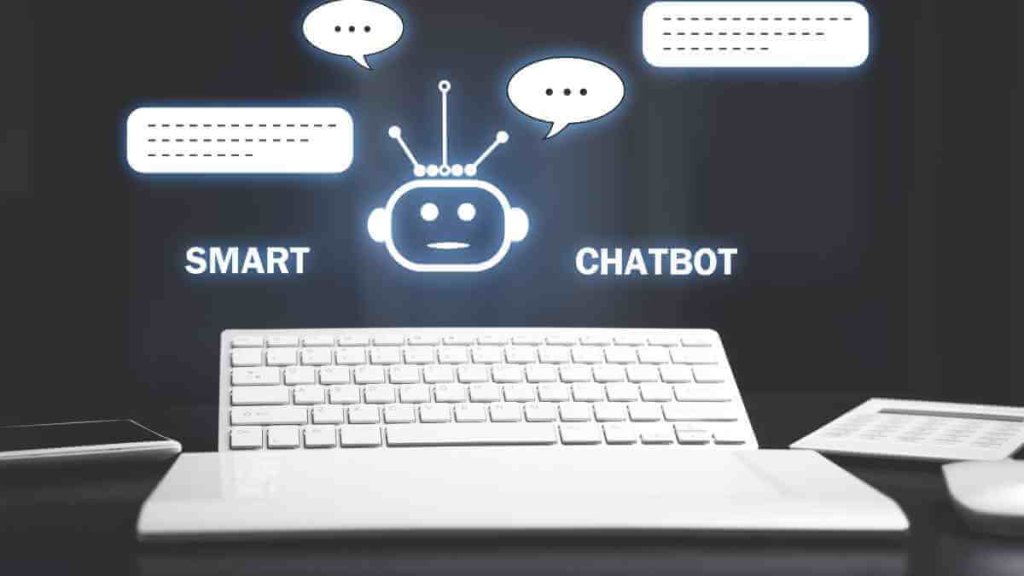Conversational AI Chatbot Decoded: Behind the Scenes with NLP
Chatbots are everywhere! From answering your questions on a customer service website to recommending the next song on your smart speaker, these AI-powered agents are changing the way we interact with technology. But have you ever wondered what really goes on behind the scenes? How do chatbots understand us so well and carry on seemingly natural conversations?
The answer lies in a fascinating blend of two powerful technologies: Natural Language Processing (NLP) and Conversational AI. Together, they unlock the magic of human-like conversations in the digital world. The Conversational AI Chatbot seamlessly integrates into customer service operations, enhancing user experience. Discover how a Conversational AI Chatbot can transform your business’s approach to real-time customer engagement. Deploying a Conversational AI Chatbot has proven to significantly reduce wait times and improve customer satisfaction.
Today, we’ll embark on a journey to decode this fascinating technology. We’ll explore the inner workings of NLP and Conversational AI, uncovering how they enable chatbots to understand our language, interpret our intent, and respond in a way that feels natural and engaging. The development of a Conversational AI Chatbot requires careful consideration of language processing and response accuracy. Future trends in Conversational AI Chatbot development indicate a move towards more predictive and proactive communication capabilities.

NLP: The Language Interpreter
Imagine trying to hold a conversation with someone who speaks a completely different language. That’s essentially what chatbots face when they deal with our messy, informal human language. This is where Natural Language Processing (NLP) steps in.
What is NLP?
NLP is a branch of AI that focuses on teaching computers to understand and process human language. It’s the key ingredient that allows chatbots to bridge the gap between our natural way of communicating and the structured world of data.
Key NLP techniques used in Conversational AI Chatbot
Let’s dive deeper into some key NLP techniques used in chatbots:
1. Text Normalization:
Imagine a chatbot trying to understand “I wanna order pizza?” This informal language needs some cleaning before it can be processed. Text normalization tackles this by removing noise like slang, contractions, and typos, transforming the sentence into a more structured format like “I want to order pizza”. The Conversational AI Chatbot represents a significant advancement in how businesses handle large volumes of inquiries.
2. Named Entity Recognition (NER):
NER helps a chatbot identify and classify specific entities within your message. It can recognize people, places, organizations, products, and even dates and times. For example, if you tell a travel chatbot “I want to book a flight to Paris,” NER identifies “Paris” as the destination city, allowing the chatbot to provide relevant flight options. Explore the potential of a Conversational AI Chatbot in managing bookings and reservations without human intervention.
3. Sentiment Analysis:
Chatbots aren’t just about understanding words; they also need to understand the emotions behind them. Sentiment analysis helps analyze the emotional tone of your message, identifying if it’s positive, negative, or neutral. This allows the chatbot to tailor its response accordingly, offering empathy or support when needed. Retail businesses can leverage a Conversational AI Chatbot to personalize shopping experiences and boost sales.
4. Intent Recognition:
The heart of any conversation is understanding the speaker’s intent. NLP uses intent recognition to identify the underlying purpose behind your message. Whether you’re asking a question, making a request, or giving feedback, intent recognition ensures the chatbot understands what you truly want and responds accordingly. Implementing a Conversational AI Chatbot can be a game-changer for tech support, offering instant solutions to common issues. A well-designed Conversational AI Chatbot can mirror human-like interactions, making digital conversations feel more natural.
How NLP Enables Chatbots to Understand User Requests:
By combining these techniques, NLP allows chatbots to:
- Break down user input into its essential components: Just like we break down sentences into words and words into letters, NLP helps chatbots understand the structure and meaning of user messages.
- Identify the key information: NLP filters out irrelevant details and focuses on the essential information the user wants to convey.
- Match the user’s intent with pre-defined responses: Based on the extracted information and identified intent, NLP helps the chatbot choose the most appropriate response from its repertoire.
Conversational AI: The Brain of the Bot
While NLP equips chatbots with the ability to understand our language, it’s Conversational AI that takes things to the next level. It’s the brain behind the chatbot, enabling it to hold meaningful and engaging conversations. Enhance your event management strategy with a Conversational AI Chatbot that can interact with attendees in real-time.
What is Conversational AI?
Conversational AI refers to technologies that allow chatbots to interact with users in a natural and engaging way. It combines NLP with other AI techniques to enable chatbots to:
- Understand the context of the conversation and maintain a coherent flow.
- Learn and adapt over time based on past interactions.
- Generate human-quality text responses that are personalized and relevant to the user.
Key Conversational AI Technologies Used in Chatbots:
Several key technologies work together to power Conversational AI in chatbots:
- Dialogue Management: This involves controlling the flow of conversation. The chatbot tracks the context of the discussion, remembers past interactions, and chooses the next appropriate action, whether it’s asking a clarifying question, providing information, or offering assistance.
- Machine Learning: This enables chatbots to learn and improve over time. By analyzing large datasets of conversations, chatbots can identify patterns and trends, refine their understanding of user intent, and generate more accurate and relevant responses.
- Natural Language Generation (NLG): This is the art of creating human-quality text that is specific to the user and the context of the conversation. NLG helps chatbots respond in a way that feels natural, engaging, and personalized.
How Conversational AI Chatbot Hold Meaningful Conversations:
Conversational AI allows chatbots to:
- Remember past interactions: This enables the chatbot to personalize the conversation and build rapport with the user.
- Understand the context of the conversation: The chatbot can interpret the user’s intent and respond in a way that is relevant to the current topic.
- Generate creative and engaging responses: NLG helps the chatbot go beyond pre-defined responses and create personalized replies that sound natural and engaging.
- Learn from past interactions: Machine learning allows the chatbot to continuously improve its performance and become more adept at understanding and responding to user requests.
Benefits of Chatbots:
The rise of chatbots isn’t just about holding conversations – it’s about revolutionizing the way we interact with technology and access information. From enhancing customer service to streamlining business operations, chatbots offer a range of benefits across various industries.
- 24/7 Customer Service:
One of the most significant benefits of chatbots is their ability to provide 24/7 customer service. Unlike human representatives who work limited hours, chatbots are available round-the-clock, offering immediate assistance to users regardless of their location or time zone. This can significantly improve customer satisfaction and reduce wait times, leading to a more positive customer experience. Marketing strategies are now incorporating Conversational AI Chatbots to engage users dynamically across various platforms.
- Personalized Experiences:
Chatbots are adept at personalization, tailoring their responses and recommendations to each individual user’s preferences and needs. This is achieved by collecting and analyzing user data, including past interactions, browsing history, and purchase patterns. By leveraging this information, chatbots can offer personalized product recommendations, answer specific questions, and provide relevant support, ultimately enhancing the user experience and driving engagement. The latest updates in Conversational AI Chatbot technology have introduced more nuanced and empathetic interactions.
- Improved Efficiency:
Chatbots automate repetitive tasks and handle straightforward inquiries, freeing up human employees to focus on more complex issues or strategic initiatives. This significantly improves efficiency in various departments, from customer service and marketing to sales and operations. By automating routine tasks, chatbots can save businesses time and resources, resulting in cost reduction and increased productivity. Understanding the ethics of using a Conversational AI Chatbot is crucial as AI continues to evolve.
- Data-driven Insights:
Chatbots act as valuable data collection points, capturing user interactions and preferences. This data can be analyzed to gain valuable insights into customer behavior, identify trends, and understand user needs better. These insights can inform strategic decisions, improve product development, and personalize marketing campaigns, ultimately driving business growth and success. Financial services benefit from a Conversational AI Chatbot by providing instant responses to customer queries about banking and investments.
In addition to these key benefits, chatbots also offer advantages in terms of accessibility, multilingual support, and scalability. They provide a convenient way for users to access information and services without having to download apps or navigate complex websites. Moreover, chatbots can be easily translated into multiple languages, enabling businesses to reach a global audience. Finally, chatbots are highly scalable, allowing them to adapt to increasing user volumes and diverse needs efficiently. Educational institutions are increasingly adopting the Conversational AI Chatbot to aid in student learning and administration.
MyGov Corona Helpdesk Using WhatsApp Chatbot
Haptik collaborated with the Government of India to develop the MyGov Corona Helpdesk, a WhatsApp chatbot to answer a wide range of queries about the COVID-19 pandemic. Within the first 48 hours of its implementation, the MyGov Corona Helpdesk processed over five million conversations from users across the country according to Haptik Blog.
The Future of Chatbots: Unveiling the Horizon of Human-Computer Interaction
The journey of chatbots is far from over. As NLP and Conversational AI technologies continue to evolve, we can expect to witness a future of chatbots brimming with advanced capabilities and transformative potential. Let’s delve into the exciting trends shaping the future of chatbots. The integration of a Conversational AI Chatbot into mobile apps has revolutionized user interaction and retention. Discover the key features to look for when selecting a Conversational AI Chatbot for your enterprise.
Trends in NLP and Conversational AI Chatbot:
Several trends are driving the evolution of NLP and Conversational AI:
- Advancements in Deep Learning: Deeper and more powerful neural networks are enabling NLP models to achieve human-level performance in tasks like natural language understanding and generation.
- Focus on Multimodality: Chatbots are moving beyond text-based interactions and integrating other modalities like voice, image, and video, creating a more natural and engaging user experience.
- Increased Personalization: Chatbots will become adept at understanding individual user preferences, habits, and emotional states, tailoring their responses to each user’s unique context.
- Focus on Empathy and Emotional Intelligence: Chatbots are being designed to understand and respond to human emotions, enabling them to provide more compassionate and supportive interactions.
Potential Capabilities of Future Chatbots:
These advancements pave the way for a future where chatbots can:
- Engage in complex and nuanced conversations: Imagine chatbots that can hold deep philosophical discussions, provide emotional support, and even act as creative collaborators.
- Become personal assistants and companions: Chatbots will seamlessly integrate into our lives, assisting with daily tasks, managing schedules, and offering personalized recommendations and support.
- Transform education and healthcare: Chatbots can become personalized tutors, providing adaptive learning experiences and offering patients constant medical advice and support. With a Conversational AI Chatbot, healthcare providers offer 24/7 patient support and instant medical advice.
- Revolutionize customer service: Chatbots will handle complex customer inquiries, resolve issues efficiently, and provide proactive recommendations, enhancing customer satisfaction and loyalty.
Importance of Ethical and Responsible Development:
As chatbots become more powerful and integrated into our lives, it’s crucial to ensure their development is ethical and responsible. This includes:
- Protecting user privacy: Safeguarding user data and ensuring transparency about how it is used.
- Preventing bias and discrimination: Designing chatbots that are fair and unbiased in their interactions with all users.
- Promoting transparency and explainability: Making transparent how chatbots make decisions and allowing users to understand their reasoning.
- Advancing human-centered design: Ensuring chatbots are designed to serve human needs and enhance well-being.
By embracing these ethical principles, we can ensure that the future of chatbots is one that empowers individuals, fosters positive interactions, and contributes to a more inclusive and equitable digital world. You can also check The Future of AI: How Artificial Intelligence will change the World to know how AI is changing the world.
Conclusion
In the intricate dance of chatbot conversations, NLP and Conversational AI take center stage. The continuous evolution of these technologies promises a future where interactions with machines feel increasingly natural and intuitive. As businesses continue to embrace chatbots for customer engagement and operational efficiency, the behind-the-scenes magic of NLP ensures that the dialogue between man and machine becomes more seamless with each passing day.







